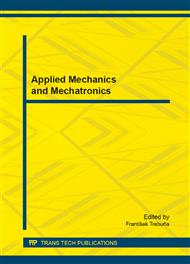p.400
p.405
p.412
p.416
p.424
p.430
p.436
p.443
p.450
Increase of Tool Steel Durability in Abrasion Wear Conditions
Abstract:
The article proposes possible increase of durability of tool steel X210Cr12 as regards working conditions under consideration of abrasive wear. From such steel tools are made for pressing wooden briquettes and saw dust waste. In practical environment a condition is held that if a material should work in abrasive wear conditions, it should have high hardness and should contain carbides in the structure. The proposed paper deals with the heat and chemical-heat treatment (nitriding) of tool steel which is working in hard abrasive wear conditions. From the obtained results it is not easy to conclude a definitive conclusion or to set the boundaries between the factors that are responsible for wear resistance. It is shown that the chemical-heat treatment can in the last step of the heat treatment lead to an increase or even to a decrease in the abrasive wear resistance of the material. The aim of the paper is to set a proper heat treatment of materials used for pressing in abrasion wear conditions.
Info:
Periodical:
Pages:
424-429
Citation:
Online since:
August 2014
Authors:
Keywords:
Price:
Сopyright:
© 2014 Trans Tech Publications Ltd. All Rights Reserved
Share:
Citation:


